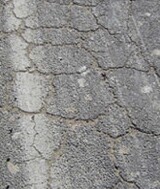Road Assets
Urban Salinity | Buildings and Structures | Vegetation and Earth
| Damage to roads and pavements caused by salinity and waterlogging occurs primarily as a result of saturation of the different layers within the structure. There are several forms of road deterioration and pavement distress resulting from salinity and waterlogging as described below (from McRobert and Foley, 1999). Rutting:
| 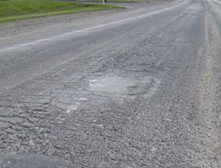 Road pavement cracking 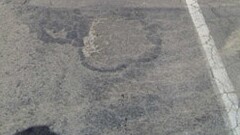 Road pavement that is cracked and potholed as a result of being affected by waterlogging and salinity. | 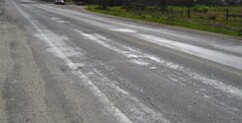 Damaged road situated in a salt affected area
|
The figures show examples of damage caused by salinity and/or waterlogging to roads in Bendigo.
The most common types of damage to road assets in the Northern region according to Houghton et al. (2002) and O'Flaherty (2003) are:
- base failure,
- shape loss,
- potholing,
- pavement shoving, and
- seals deteriorating (particularly in regions with saline groundwater).
It is not always easy to determine the precise impacts of a high watertable and salinity on road assets since there are a number of inter-related processes that can contribute to a damaged road pavement.
There are, however, several general clues that you can look for:
| 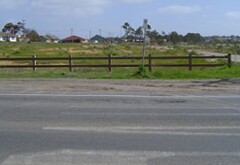 Cracked and potholed road in the foreground and salt tolerant vegetation and scalding in the background. |
McRobert J and Foley G (1999) The impacts of waterlogging and salinity on road assets: a Western Australian case study. Special Report 57, ARRB Transport Research Ltd, Victoria.
Houghton N, McRobert J and Styles E (2002) Salinity and rising water tables - risks for road assets. Austroads Project No. BS.A.N.523. Austroads Inc, Sydney.
O'Flaherty K (2003) Roads and salinity. NSW Department of Infrastructure, Planning and Natural Resources.

